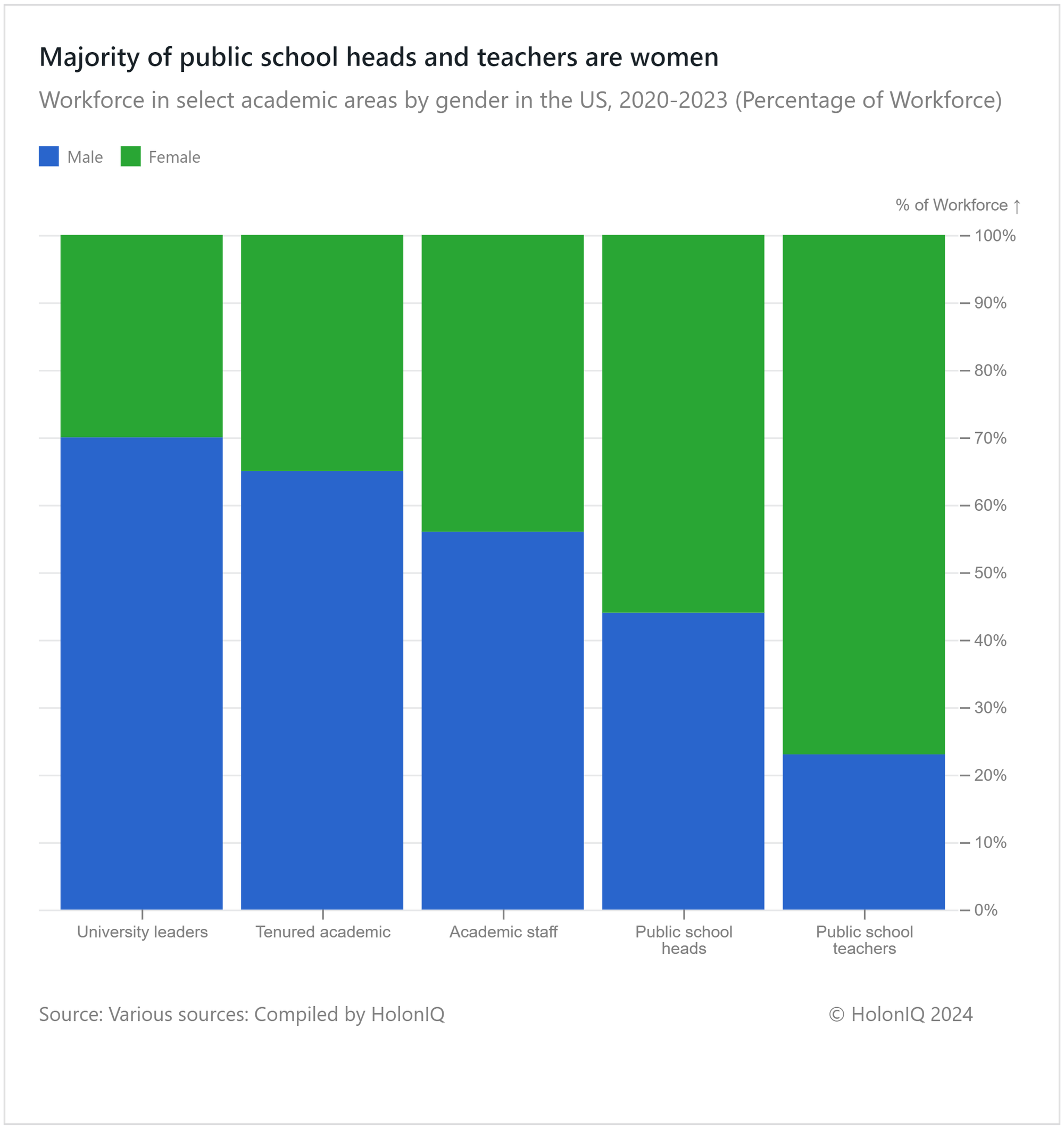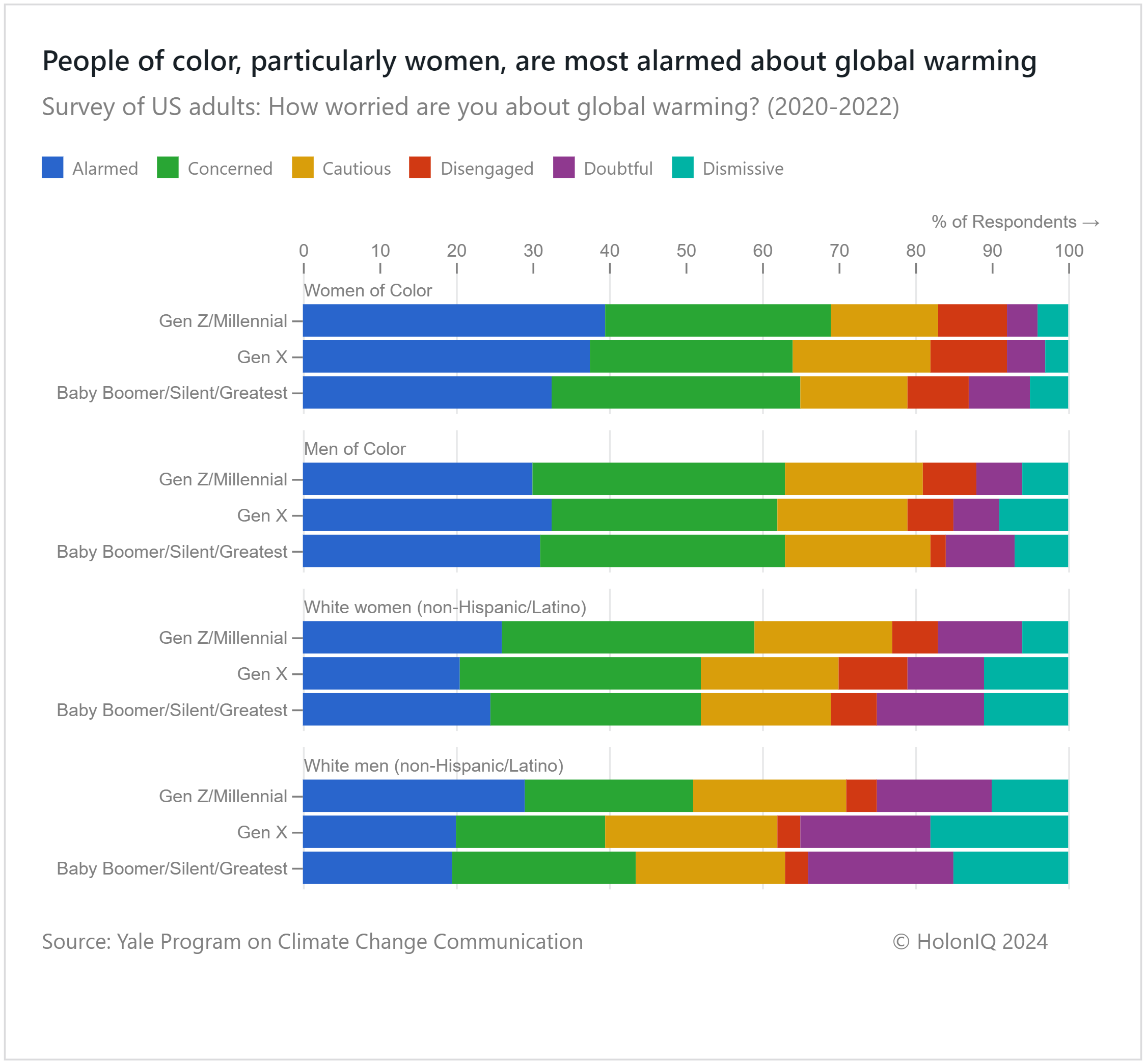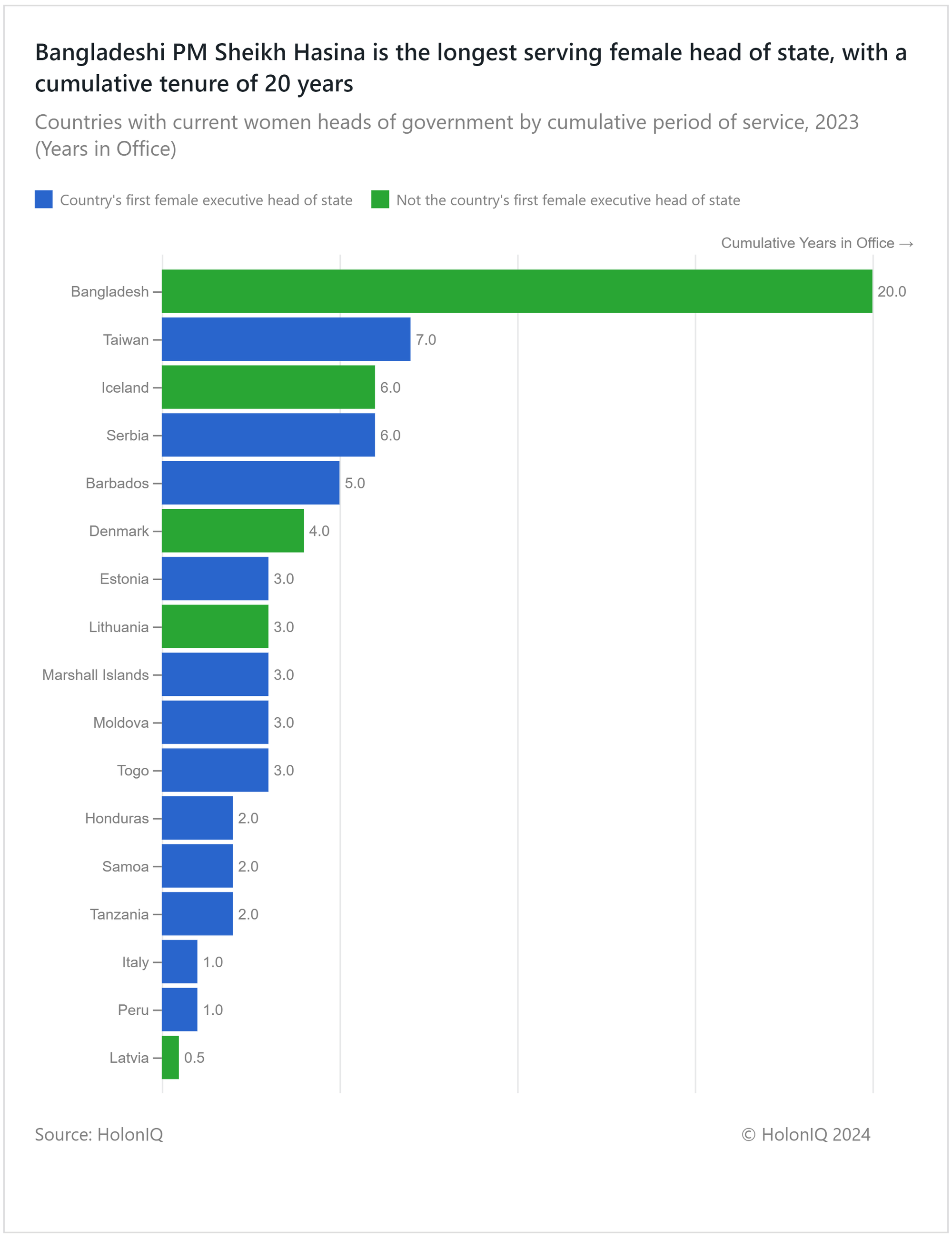👩 56% Women Principals. Global Warming. Women Leaders.
Chart of the Day #45 looks at Women in Education, Climate and Politics
Happy Women's Day 🙋♀️
To mark International Women’s Day, each year, HolonIQ takes stock of women’s leadership globally. Download this year's report, The 2024 Global State of Women's Leadership, to find deep benchmarks on Women Leaders in Climate Tech, EdTech, HealthTech, and more.
Today's Topics
- 📖 Women in Education. Women dominate education jobs but less so in leadership positions
- 🌡️ Women in Climate. Women of color most worried about global warming
- ⚖️ Women in Politics. 10% of executive heads of state are women
For unlimited access to over one million charts, request a demo.
📖 Women Dominate Education Jobs but Less So in Leadership Positions

Women are increasing their participation in the workforce, especially in the education sector. In the US K-12 public school domain, women constitute 77% of teachers but only 56% of principals.
The underrepresentation of women in the upper echelons is partly influenced by biases in hiring practices and workplace dynamics, limiting women's access to networking opportunities. This bias hinders promotions, where men are more fast-tracked to promotions and opportunities within the sector. While societal dynamics are evolving, and men are increasingly sharing domestic responsibilities, women still tend to bear more home-related duties. This could explain why women tend to avoid higher-level positions with more responsibility in return for a better work-life balance.
🌡️ Women of Color Most Worried About Global Warming

People of color, especially women, tend to be more worried about global warming than their peers according to a study by Yale. There is growing recognition of the link between gender equality and environmental sustainability. This connection encompasses the disproportionate effects of climate change on women and the crucial role women often play in managing environmental resources. In the political arena, too, women can tend to show a heightened interest in prioritizing environmental concerns due to these reasons.
A study has found that African Americans often reside in geographically disaster-prone locations, with experts predicting a 20% increase in the risk of flooding in black US neighborhoods by 2050. This urban-rural divide could contribute to the higher concern for climatic changes.
According to the study by Yale, Gen Z/Millennials exhibit higher levels of alarm and concern across all categories. Baby Boomers, the Silent Generation, and the Greatest Generation show higher levels than Gen X, indicating a non-linear correlation between age and environmental concern.
⚖️ 10% of Executive Heads of State Are Women

Women are becoming increasingly involved in politics. Bangladesh stands out, with its current Prime Minister, Sheikh Hasina, holding the longest cumulative tenure in power (20 years), among current women heads of state. Considered the world's first elected female leader, Sirimavo Bandaranaike assumed power in Sri Lanka in 1960. As of February 2024, 28 women serve as Heads of State or Heads of Government, marking a slight decline from the previous year. 17 of these women hold executive positions, representing only 10% of all executive Heads of State and underscoring the progress that still needs to be made in achieving true balance in political representation.
Like getting this newsletter? For unlimited access to over one million charts, request a demo.
Thank you for reading. Have a great week ahead!
Have some feedback or want to sponsor this newsletter? Let us know at hello@holoniq.com
